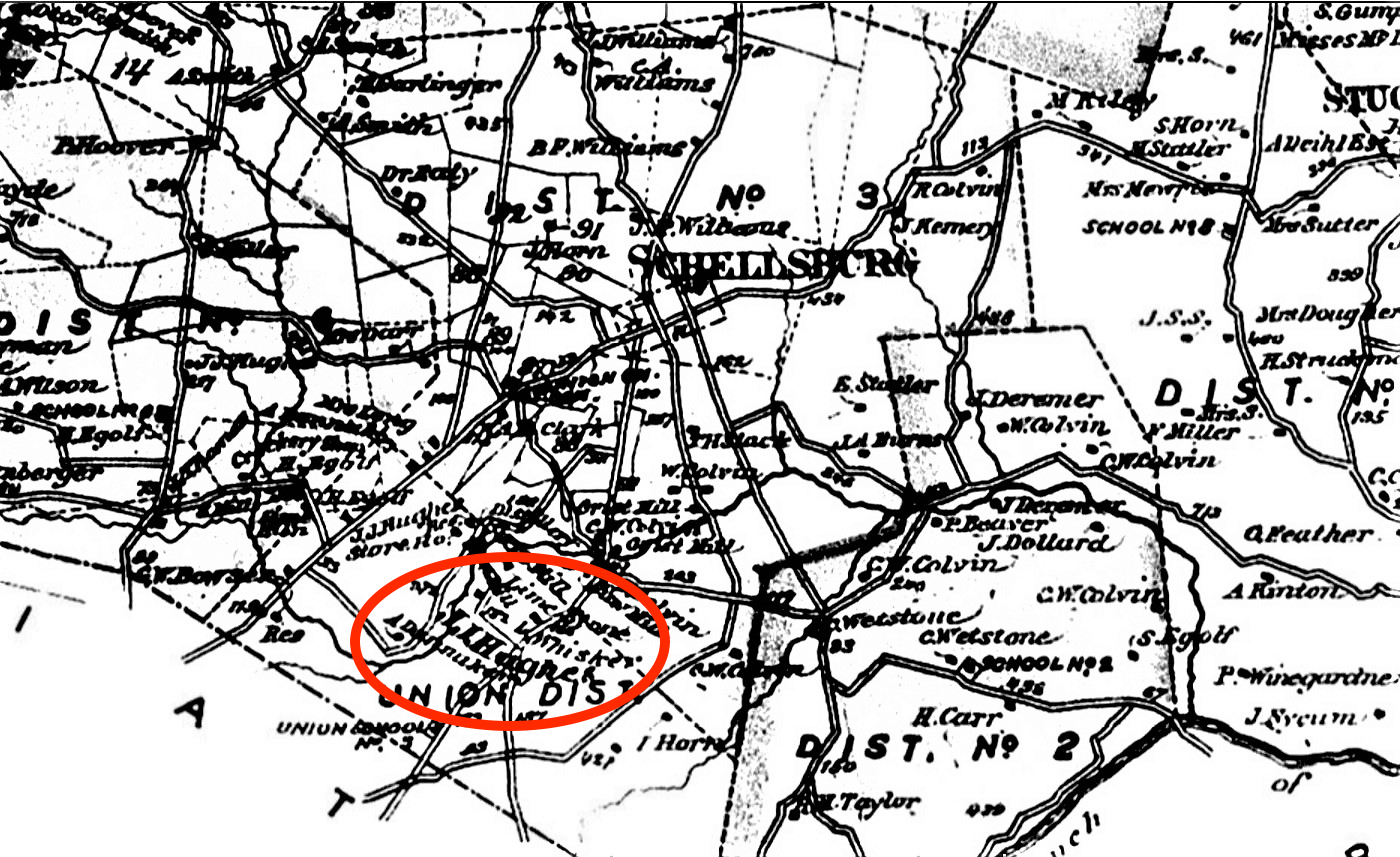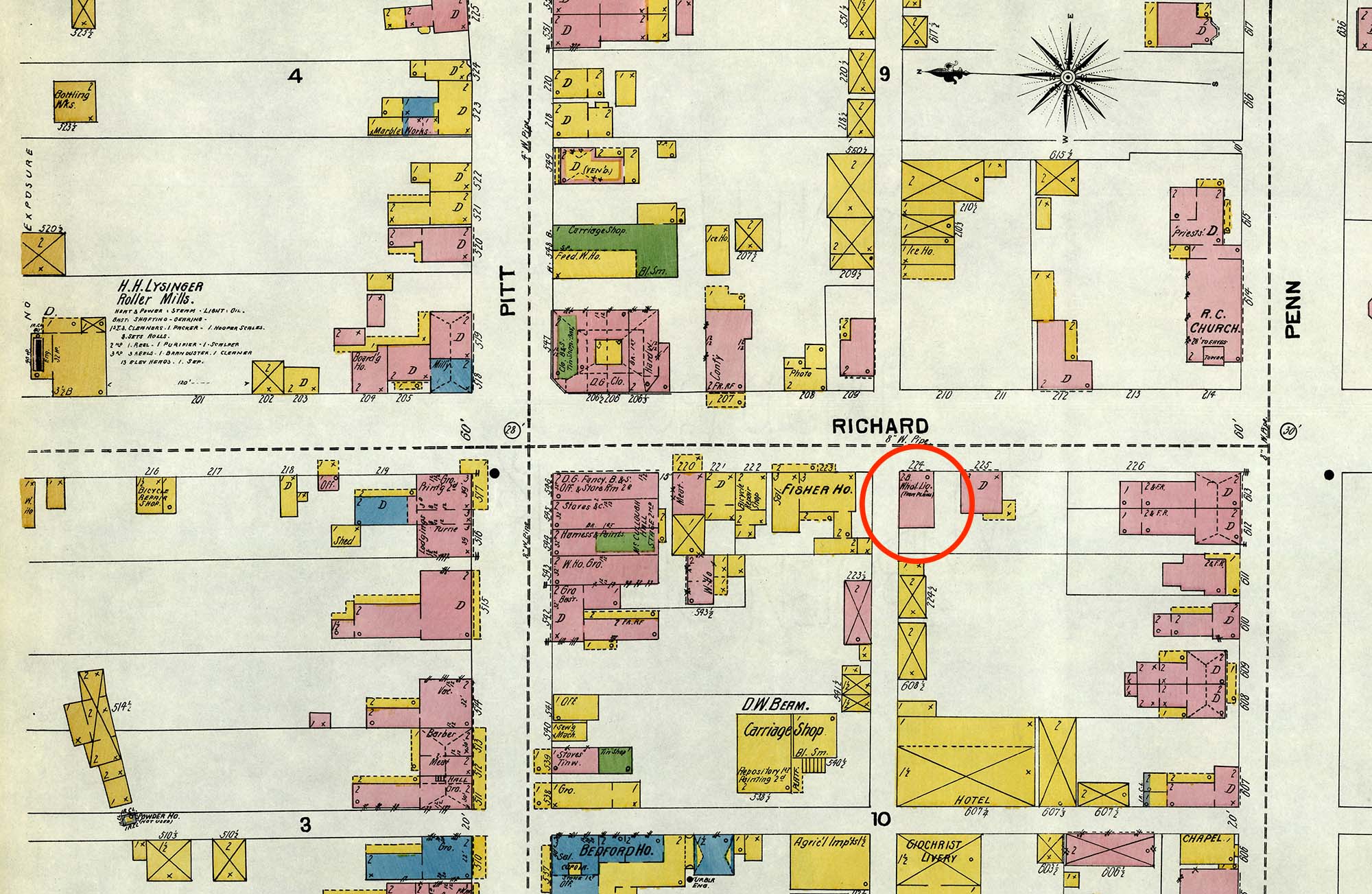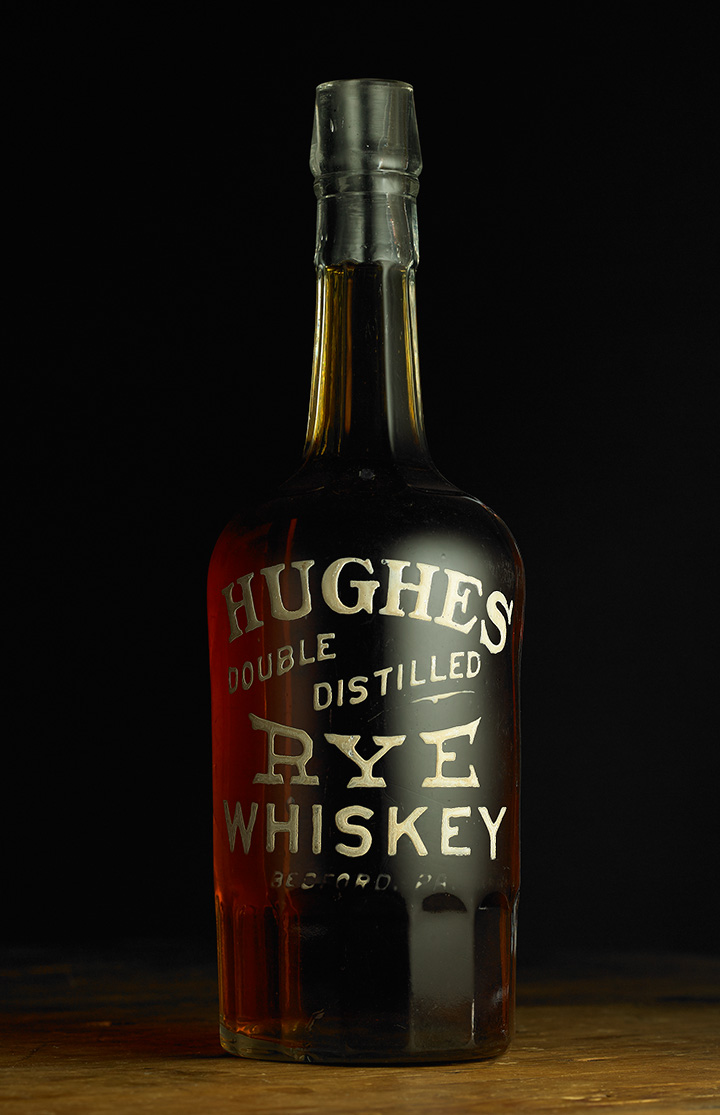One of the more exciting rye whiskey brands in 2023 is named after a pre-Prohibition rye whiskey from Bedford County, Pennsylvania. It is not a unique thing to start a whiskey brand inspired by a pre-Pro label. In fact, it is exceedingly common and has been done many times since Repeal in 1933. Many new start-ups over the last decade have hen-picked a popular brand that once held the public interest and have given that brand new life by reprinting old labels and concocting a story to go with it. Most do not have genuine ties to the family that created the brand or have much interest in its history outside of the few blurbs necessary to mock up a back label. What I find exciting about THIS rye whiskey is that the owner of the brand is, in fact, a descendent of the original distillers and has a treasure trove of documentation connecting his modern brand to the original.
Cyrus Kehyari is the great-great grandson of the founders of the Hughes Brothers’ Distillery which once produced their “Belle of Bedford” pure rye whiskey near Schellsburg, Pennsylvania. I have been lucky enough to talk with Cyrus on multiple occasions about his brand and the history he is keen to respect. After looking over the distillery’s records, it is pretty clear that the Hughes Brothers used a 90/10 (rye/barley malt) mashbill. When Cyrus began looking at options for relaunching the brand, he sought out whiskey stocks that would mimic this mashbill. Now, we all know that MGP makes a 95/5 mashbill for rye, but when Cyrus was looking for his whiskey stocks over a decade ago, there were few brands on the market that were utilizing that rye from Indiana. He was talking to folks like Dave Pickerell, who helped launch Whistle Pig’s rye in 2010, and Drew Kulsveen, who was using MGP ryes for Willett Distillery’s releases at the time. When Willett began distilling their own rye, the new stocks that Drew Kulsveen was using for Wllett were purchased by Mr. Kehyari for his new brand. 95/5 wasn’t exactly 90/10, but it was close, and Cyrus was satisfied that it would suit his needs. That new distillate aged at MGP for a decade before he began releasing it to the public. Of course, by then, MGP was selling to many new companies that were jumping on the rye bandwagon! He could not have known how popular the distillate would become!
The “Belle of Bedford” label was painstakingly recreated to look like the pre-Pro bottles from his grandsires’ retail shop in Bedford, Pa. They are beautiful, and the whiskey inside is stellar. Even whiskey enthusiasts that have come to know the MGP rye flavor profile note that his barrels are unique. Personally, I agree. His efforts to get those stocks early panned out, and his efforts were not in vain. The fact that he has kept the brand in Pennsylvania and has made every effort to respect its history is admirable. But don’t take my word for it! Try it for yourself:)
Here’s some history that I have gathered on Cyrus’ family and the distillery that once produced some of the most excellent whiskey to come out of Bedford County, Pennsylvania.
Hughes Brothers
Schellsburg, Napier Township
Bedford County
RD# 22
9th District
The first of the Hughes distillers was Michael Hughes, a native of County Carlow, Ireland. He was an early settler of Juniata Township in Bedford County. The distilling skills he acquired in Ireland were employed in making whiskey on his Pennsylvania farmstead. Michael was in his 50’s when he began his family, but when his sons came of age, he began schooling them his trade, as well. When John Hughes, Michael’s 3rd son, completed his education in Bedford County’s schools, he returned home to work beside his father until Michael’s death in 1862 at the age of 89. John assumed his father’s role at the family distillery for the next decade. The next generation of Hughes men would go on to make their family name famous in Bedford County.
In 1872, John Hughes purchased a gristmill in Napier Township, about a mile and a half southwest of Schellsburg. He bought the mill from John Hull, who built the structure beside the Shawnee Creek in 1850. John Hughes built his distillery near the mill and ran it successfully for the next 7 years. He then sold his distillery to his 23-year-old son, Patrick, but remained on until retiring in 1886. Now called the Hughes Brothers Distillery, Francis P. (Frank) and Patrick ran 70 gallons of whiskey a day out of their distillery while their father attended to his farmland just down the road. When John was 49 years old, his 16-year-old son, John Joseph Hughes, moved away to Garrett County, Maryland to gain experience at another distillery, but he returned after only a year to continue on with his father and older brothers. J.J. Hughes would leave home in 1890, at the age of 28, to build a distillery of his own in Walnut Grove, Cambria County. (My entry on John J. Hughes Distillery, RD#56, 23rd District is not described here as it was located in another PA county. He was the grandson of the elder John J. Hughes, but not a “junior,” so the repeated name may create some confusion.)

The Hughes Brothers sold their barrels of rye whiskey wholesale to local taverns and hotels. They kept a bonded warehouse and a retail location in Bedford city where they sold their “Belle of Bedford” Pure Rye Whiskey. The warehouse, built in 1901, was located near their retail liquor house on Richard Street halfway between Pitt and Penn Streets (southwest corner of Richard and W.Central Way).

When Francis (Frank) died in 1897, Patrick became business partners with Frank’s wife, Mary, who took over for her late husband. The name “Hughes Brothers,” however, remained unchanged. The company began to feel push back from Bedford’s licensing courts when they were denied a wholesale license in 1903. It is likely that the wholesale license they held in Bedford Borough and the wholesale distillery license they held in Napier Township were a conflict for the courts. Of course, that was not the only legal funny business that Hughes Distillery was caught up in.
The government-assigned position of storekeeper/gauger for the Hughes Brothers’ Distillery was highly sought-after by applicants. The distillery was larger than the other 2 operating in Bedford county, so the job paid more. John M. Reynolds, Assistant Secretary of the Interior under President Cleveland and soon-to-be Congressman for the 59th Congress, had been looking to place his brother, Barnett Reynolds, into the position of Hughes Brothers’ gauger/storekeeper. He concocted a scheme to place his brother into an occupied job position by sending the employed gauger on an errand that could not be competed in time. Reynolds could now claim that gauger to be incompetent and have him replaced with his brother. Ironically, gaugers were often rotated out of one distillery and into another to avoid favoritism and corruption. Unfortunately, in many cases, men like John M. Reynold’s brother were placed in well-paid gauger positions because of their political affiliation or relation to a political figure. Favoritism and cronyism were rampant with the huge amounts of money that the liquor taxes brought in for the government. The Hughes Brothers’ Distillery was not the first or last distillery to be caught up in corruption, but this example shows how distilleries and their association with government jobs were used by powerful men.
The Hughes Brothers Distillery continued to withdraw rye whiskey from their warehouses right up to Prohibition. Like so many famous Pennsylvania rye whiskey producers, neither the distillery or its brands would return after Repeal.

